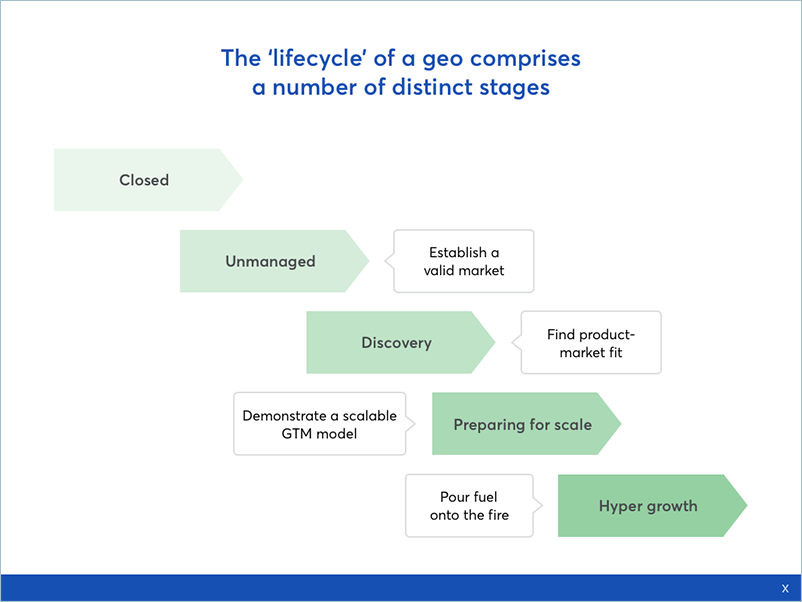A predictable model for growing key functions in new markets
To be meaningful, your geo lifecycle needs to have a view of how each of your functions (Sales, Marketing, Operations, Product etc.) evolves over time.
This should certainly include a view of how key functional costs (both headcount and non-headcount) scale over time, and it may well also cover the key activities and focus areas of each function at different stages. This is important because it means you do not have to continually make new decisions about investment requirements while trying to figure out what your expanding team should be doing.
We found that it worked well to create a maturity scale for each function, which gave us a common internal shorthand for the level of investment required. For example, Sales maturity level S1 might imply investing in two Account Executives, alongside one Sales Development Representative.
Well-defined triggers for investment
One of the most important functions of a playbook is to prompt your business to make the right investment choices at the right time. As such, it’s important to have clarity about your triggers. What do you need to see to feel confident that you can accelerate investment in a given geo?
Some triggers that have worked for us:
- Monthly recurring revenue (or the drivers of it, including number of transactions)
- Leading indicator trajectory (e.g., number of sign-ups or leads)
- Pipeline generation
- Number of employees needed in a given market
What have we learned?
The company I work for is still at a relatively early stage in its international growth story, so our own playbook is continuing to evolve. We’ve opened offices in Paris and Melbourne already in 2018, with another to follow soon in Germany.
A few of the key lessons we’ve learned along the way:
- Over-invest up-front in clarifying your stage definitions and the key criteria to enter and exit each stage. Even if you don’t get the levels right, defining the metrics is key.
- Make someone the gatekeeper of the playbook. You could consider a Country Launch Manager role to capture learnings and project manage execution.
- Consider separating out the playbooks for different types of market. Some geos are more similar than others and may require similar focus and investment.
- Reserve time for iterating. A key part of the playbook is documenting learnings, so get into the habit of setting aside time to make changes in a systematic way.
About Pranav Sood
Pranav Sood is Director of International Expansion at GoCardless, managing a team across London, Europe, and Australia. He also leads GoCardless’ Business Operations and Strategy team. Pranav started his career at Bain & Company.
This article first appeared in VentureBeat.








